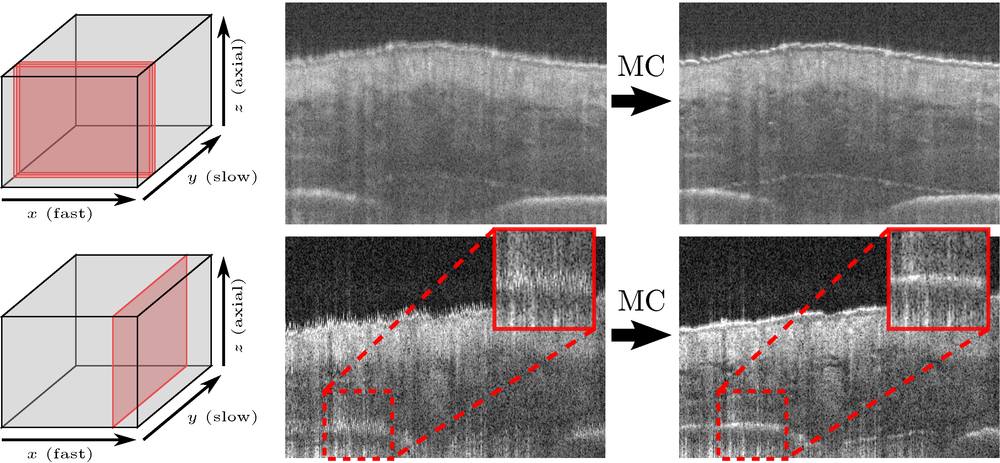Optical Coherence Tomography1 (OCT) is a noninvasive high resolution imaging technique which is used here for in vivo 3D volume capturing of mouse skin tissue (hairless mouse) around a percutaneous implant.
3D volume acquisition in OCT is enabled by using a lateral scanning scheme.
The scanning process can take several seconds.
During this time period, the skin tissue has to stay fixed in order to avoid motion artifacts.
A custom made animal positioning table was used in order to fixate the mouse during in vivo OCT acquisition.
Nevertheless, slight up and down movements introducing motion artifacts in the OCT data, caused by heart beating and breathing of the mouse, could not be avoided (see Fig. 1).

|
|---|
| Figure 1: In vivo OCT scan and its motion compensated result. Top: Fast scanning direction (three consecutive B-scans averaged) Bottom: Reslice along the slow scanning direction. |
We present a probabilistic motion compensation algorithm using Conditional Random Fields (CRF).
Simple motion compensation approaches using crosscorrelation of neighboring image columns tend to oversmoothing, i.e. flatten the tissue surface.
The major problem here is in how to separate the motion shift (which lives in time domain) from the skin tissue structure change (spatial domain).

In our approach, we deal with this problem by introducing two CRF energy terms: